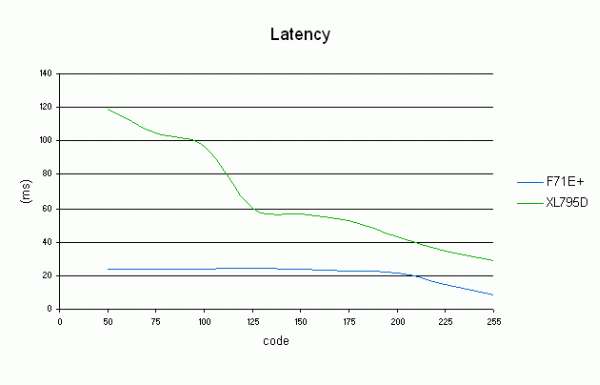Can 19" LCDs Pass the Frag Test?
Xerox XL 795D's Bad News
We measured the panel's actual latency, and unfortunately the results are only too clear for gamers who might have been interested in this unit:

Again, a reminder of the method we use. This curve shows the different latency values as a function of the gray level to be displayed. An alternation from black to white is shown on the curve as a point at 255 on the X-axis, a black-gray transition is 125 on the X-axis, an alternation between black and dark gray is 50, etc.
The official ISO response time specified by the manufacturer is only for black/white transitions (0/255). While the value we measured is in agreement with the manufacturer on this point, it doesn't mean much as far as the panel's actual responsiveness is concerned.
And this panel didn't work any miracles. What we're dealing with here is a typical characteristic of PVA matrices. As transitions between values become slighter, the electrical field applied to each pixel to change the plane of the crystals' orientation becomes weaker. For a slight change, paradoxically, the rotation the crystal has to make is also slight. But with the PVA technology, latency skyrockets when the difference between the desired color and black is slight. And that's what we see here: Latency reaches a high of 120ms, whereas the panel's specs are 25ms according to the ISO standard.
It's important to mention here that you should pay careful attention to the technology a monitor uses when shopping for one. A PVA and a TN+film panel can both have a specification of 25ms and yet have radically different performances. So be very careful before you buy what you think is the monitor of your dreams. That beautiful carriage might quickly turn into a pumpkin.
Stay on the Cutting Edge
Join the experts who read Tom's Hardware for the inside track on enthusiast PC tech news — and have for over 25 years. We'll send breaking news and in-depth reviews of CPUs, GPUs, AI, maker hardware and more straight to your inbox.
Most Popular

